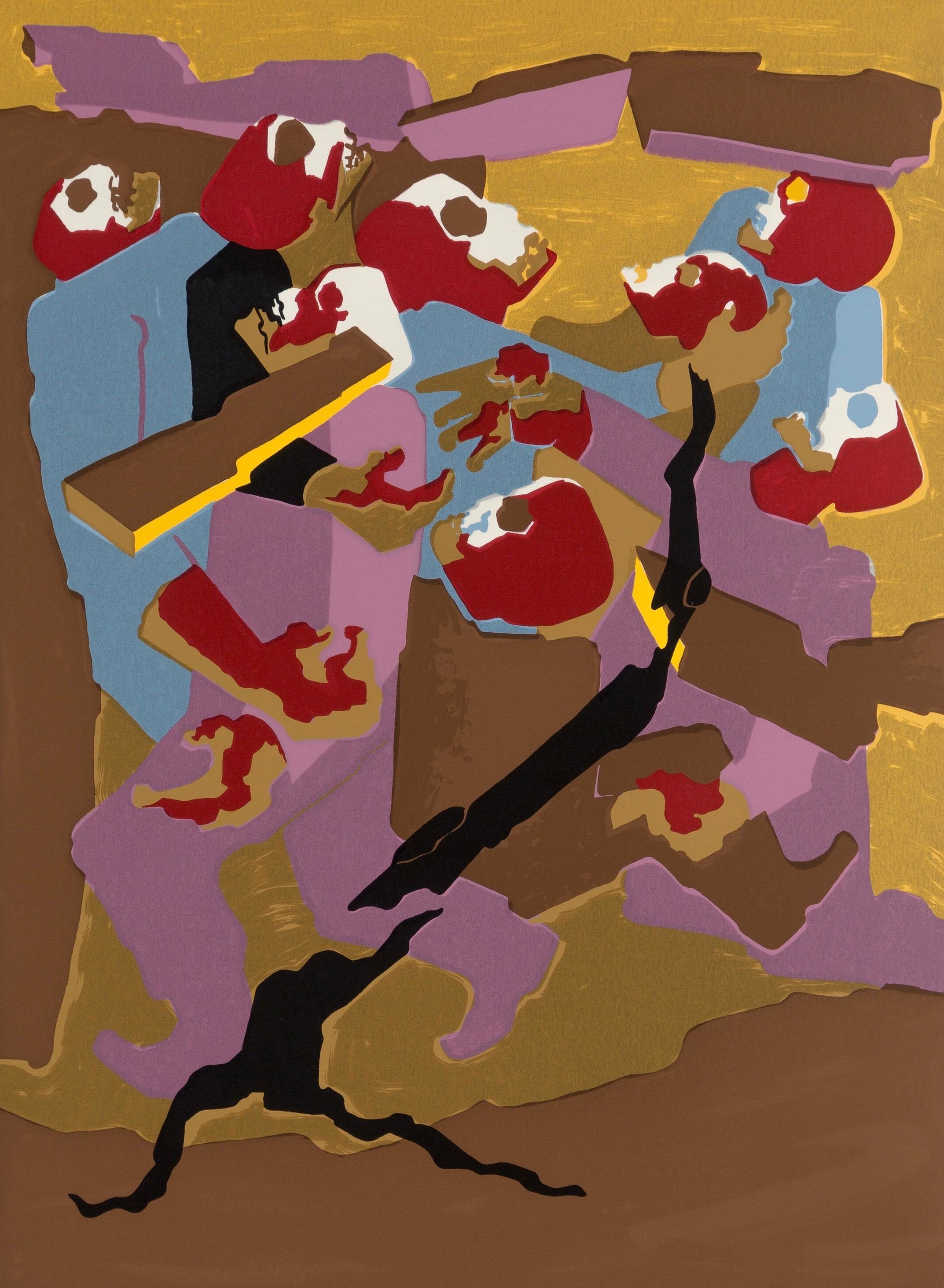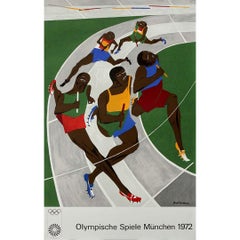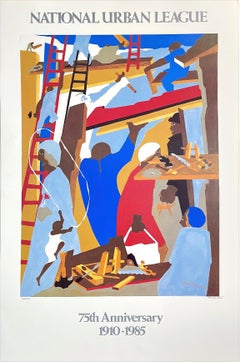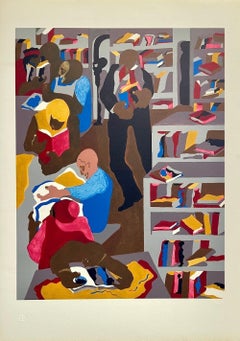Questions & Answers
Our trusted network of 1stDibs sellers answer common questions
How did Jacob Lawrence use Social Realism in his artwork?
1 Answer

In his artwork, Jacob Lawrence used Social Realism to portray the everyday lived experiences of Black Americans. His most famous work is The Migration Series, a narrative piece of 60 18-by-12-inch hardboard panels focused on the Great Migration of Black Americans from the agricultural South to the industrial North between 1910 and 1940. On 1stDibs, shop a diverse assortment of Jacob Lawrence art.
1stDibs ExpertOctober 15, 2024
Related Questions
- Why is Social Realism important?1 Answer
- What was Jacob Lawrence known for?1 Answer
- What style of art is Jacob Lawrence known for?1 Answer
- What is super-realism?1 Answer
- What materials did Roy Lichtenstein use in his artwork?1 Answer
Shop for Jacob Lawrence Art on 1stDibs
1972 Munich Olympics original poster by Jacob Lawrence
By Jacob Lawrence
Located in PARIS, FR
Created for the 1972 Munich Olympics, this powerful original poster by renowned American artist Jacob Lawrence stands as a compelling intersection of sport, art, and identity. Part o...
Category
1970s Prints and Multiples
Materials
Paper, Lithograph
THE BUILDERS 1985 National Urban League, 1st Edition, Men Working Construction
By Jacob Lawrence
Located in Union City, NJ
JACOB LAWRENCE
THE BUILDERS 1985
Commemorative Poster - National Urban League 75th Anniversary 1910-1985
Vintage original 1985 printing
Poster size - 35.25 x 22 inches, unframed, u...
Category
1980s Contemporary Figurative Prints
Materials
Offset
SCHOMBURG LIBRARY 1986 Lithograph, African American History, Black Culture
By Jacob Lawrence
Located in Union City, NJ
SCHOMBURG LIBRARY is a hand drawn, limited edition lithograph printed using traditional hand lithography methods on archival Arches printmaking paper...
Category
1990s Contemporary Figurative Prints
Materials
Lithograph
1972 Munich Olympics original poster by Victor Vasarely
By Jacob Lawrence
Located in PARIS, FR
A striking fusion of modernist aesthetics and Olympic spirit, this 1972 original poster by Victor Vasarely stands out as one of the most iconic contributions to the visual identity o...
Category
1970s Prints and Multiples
Materials
Paper, Lithograph
Jacob Lawrence, Boy with Kite, from Hiroshima, 1983
By Jacob Lawrence
Located in Southampton, NY
This exquisite silkscreen by Jacob Lawrence (1917–2000), titled Boy with Kite, from the album Hiroshima, originates from the 1983 edition published by The Limited Editions Club, New ...
Category
1980s Expressionist Figurative Prints
Materials
Screen
$2,796 Sale Price
20% Off
Free Shipping
"Windows"
By Jacob Lawrence
Located in Lambertville, NJ
Jim's of Lambertville Fine Art Gallery is proud to present this work by Jacob Lawrence (1917 – 2000).
Provenance: This painting is from the private collection of Gwen Lawrence, widow of Jacob Lawrence.
Exhibitions: An attached photo (3rd photo) of the back of the piece shows its extensive exhibition history.
Biography: Leading African-American narrative painter, Jacob Lawrence was born in Atlantic City, New Jersey in 1917. After his father abandoned his family in 1924, Lawrence spent several years in foster homes before reuniting with his mother in 1930 in Harlem, New York. In New York, he attended art classes organized at the Harlem Art Workshop with Charles Aston and the Harlem Community Art Center with Augusta Savage. There, he met fellow young painters, Aaron Douglas, and William Johnson...
Category
1970s Modern Figurative Paintings
Materials
Gouache
$743,750


